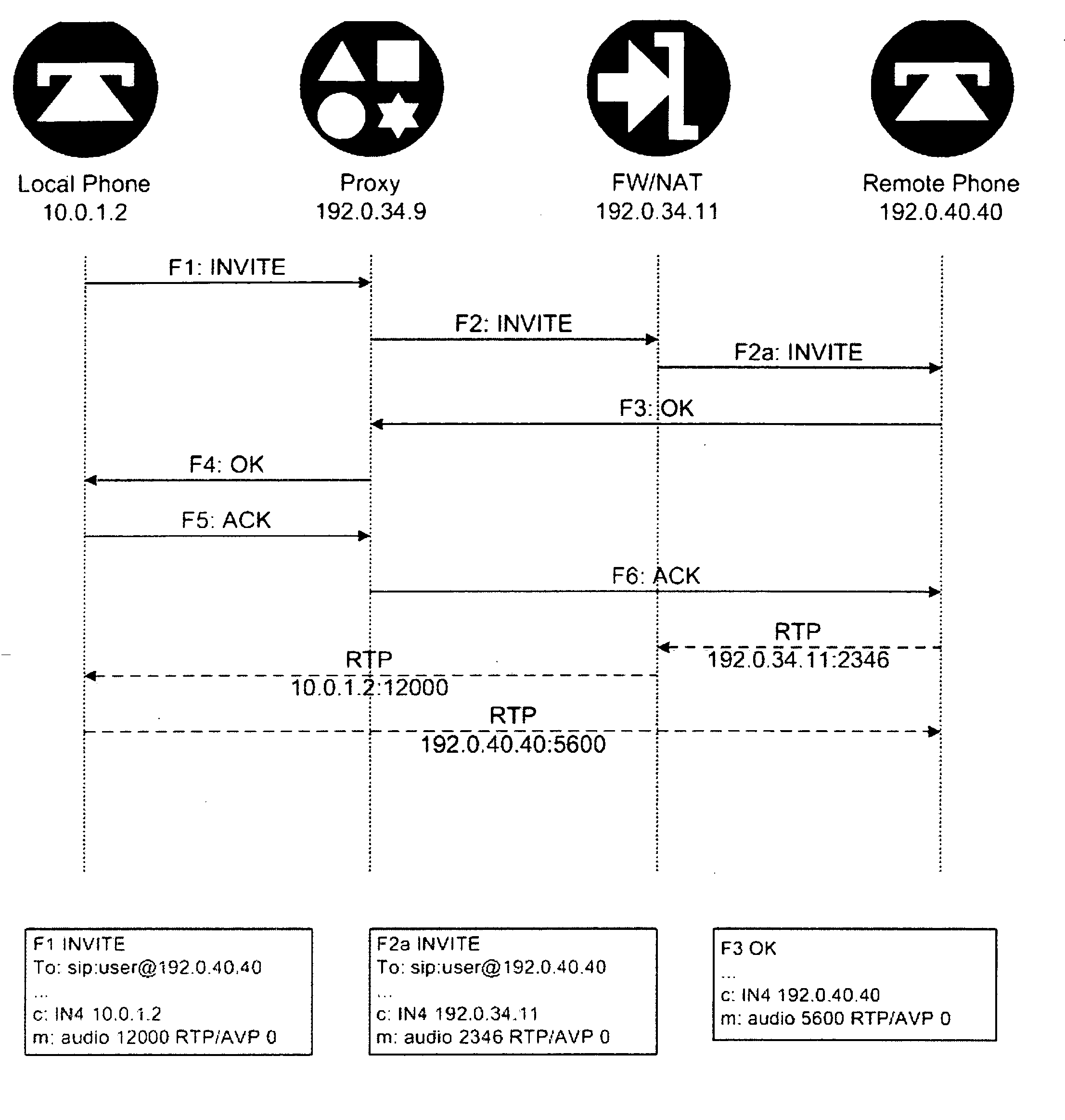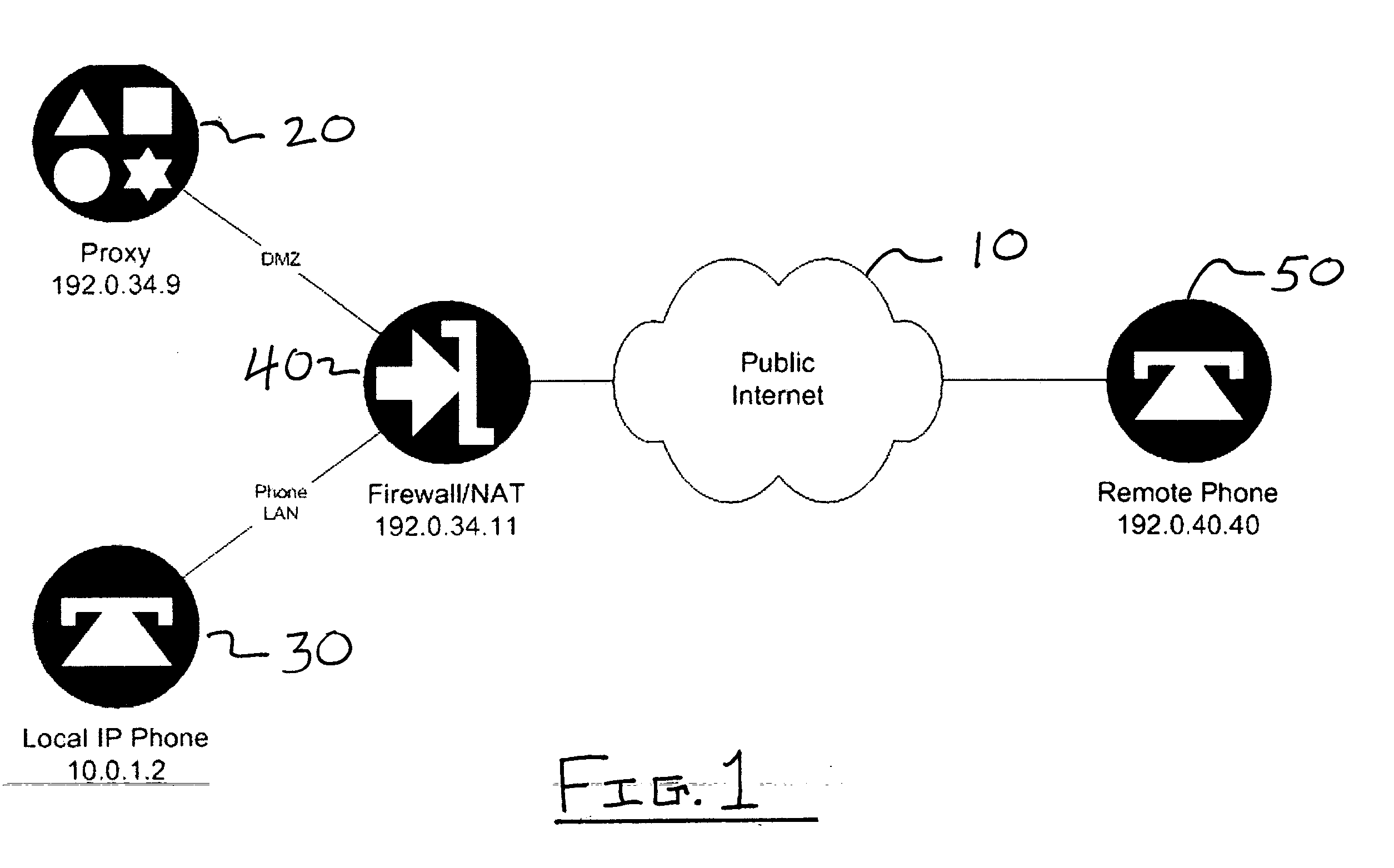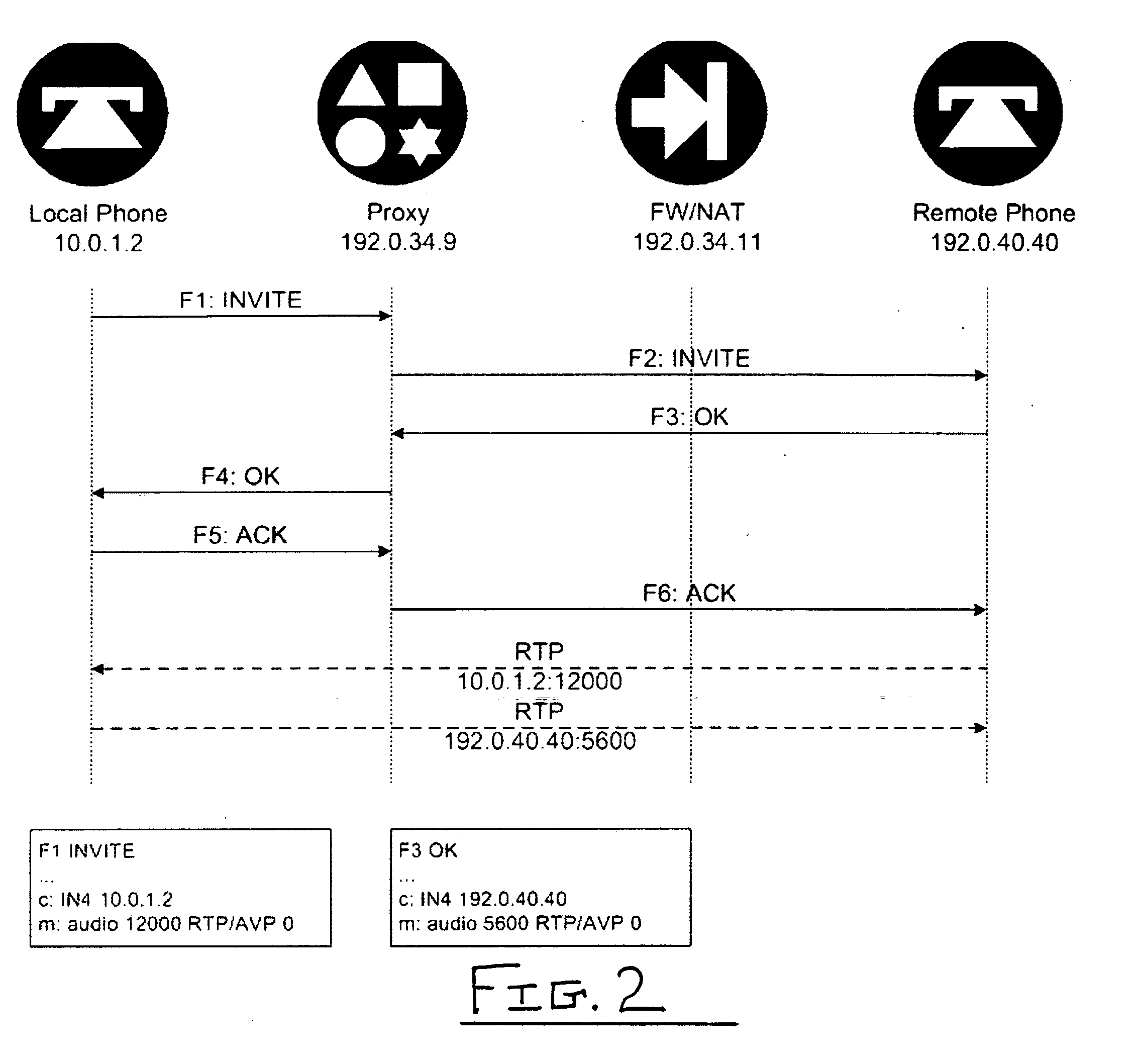Method for securing RTS communications across middleboxes
a middlebox and communication technology, applied in the field of secure realtime services, can solve the problems of firewall not being able to determine, local administrator will not know, and bearer traffic incoming to the local network from a remote host may be blocked,
- Summary
- Abstract
- Description
- Claims
- Application Information
AI Technical Summary
Problems solved by technology
Method used
Image
Examples
Embodiment Construction
1. Example Network
[0027] Below, we will describe SAFENeT in the context of an example network which is typical of an enterprise network with high security needs that supports VoIP. To the extent that any specific features of such a network are described here, they are meant to be illustrative only, and not to be limiting as to the scope of the present invention.
[0028] Our example network uses firewalls, or NAT, or both. The firewall, if used, allows incoming signaling messages between remote hosts and the call server, and also allows incoming messages between local clients and their call servers. For convenience only, and without loss of generality, user agents (UAs) are assumed to have private addresses to which there are no valid routes from the remote UA. The term “user agent” denotes an endpoint or the like in the context of SIP-based communications. For purposes of illustration we adopt SIP as an example signaling protocol. However, as noted above, our method is equally appli...
PUM
 Login to View More
Login to View More Abstract
Description
Claims
Application Information
 Login to View More
Login to View More - R&D
- Intellectual Property
- Life Sciences
- Materials
- Tech Scout
- Unparalleled Data Quality
- Higher Quality Content
- 60% Fewer Hallucinations
Browse by: Latest US Patents, China's latest patents, Technical Efficacy Thesaurus, Application Domain, Technology Topic, Popular Technical Reports.
© 2025 PatSnap. All rights reserved.Legal|Privacy policy|Modern Slavery Act Transparency Statement|Sitemap|About US| Contact US: help@patsnap.com



